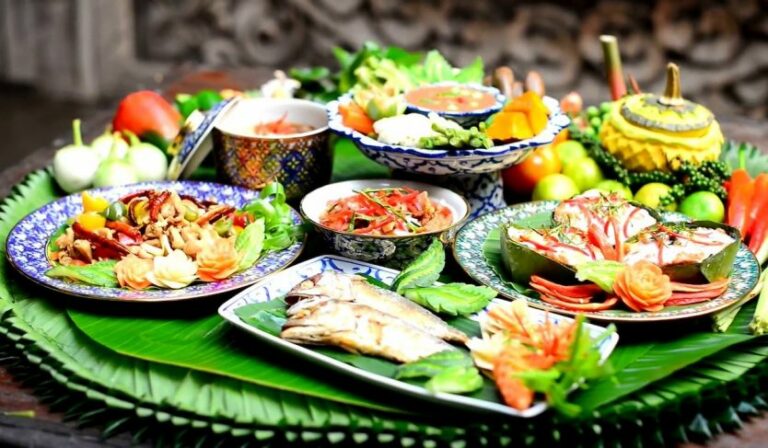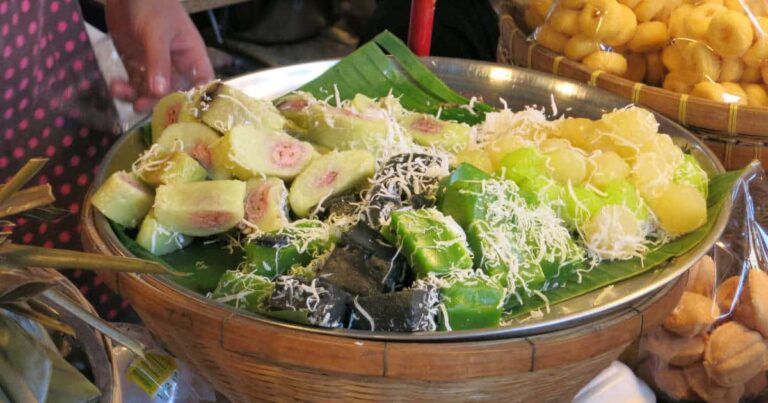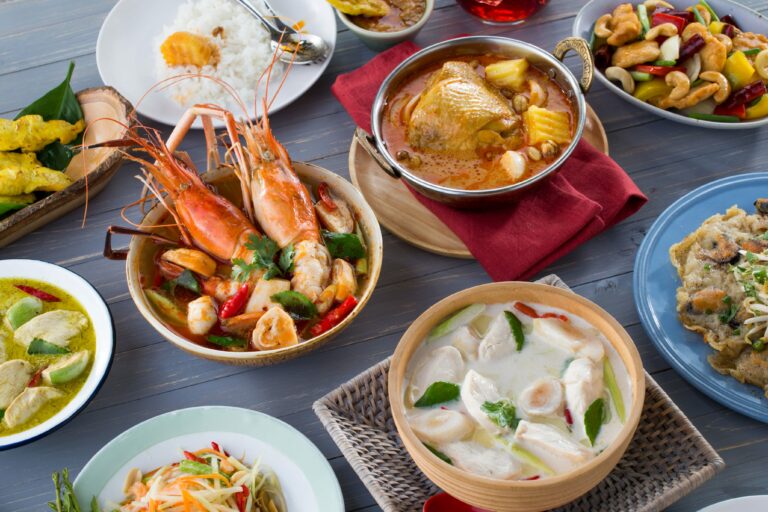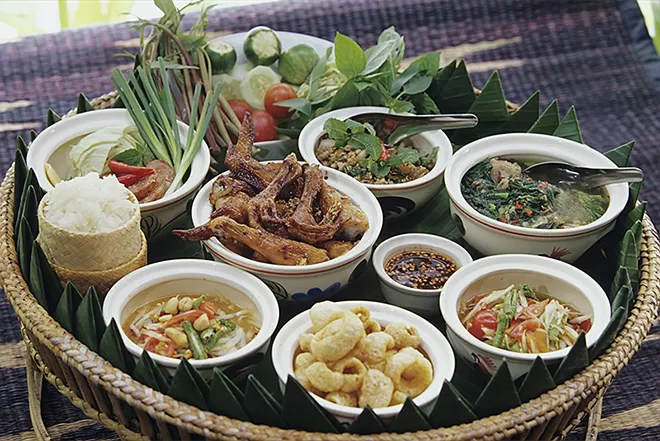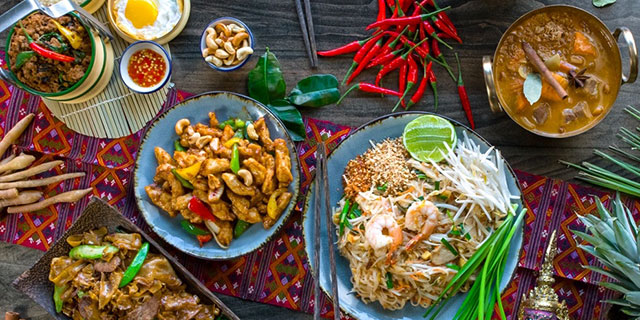Introduction: Laotian cuisine
Laotian cuisine is a unique culinary experience that is often overshadowed by its more famous neighbors, Thailand and Vietnam. Despite this, Laotian food is known for its distinct flavors and use of fresh ingredients. Laotian cuisine is heavily influenced by its geography, with its proximity to Thailand and Vietnam playing a significant role in shaping its flavors and ingredients.
Thai culinary influences in Laotian cuisine
Thai cuisine has had a significant impact on Laotian cuisine, with many dishes sharing similar flavor profiles and ingredients. The close proximity of Laos and Thailand has allowed for a cultural exchange that has resulted in a blending of their respective culinary traditions. This influence is most evident in dishes such as laap, a popular Laotian minced meat salad, which is similar to Thailand’s larb.
Identifying Thai ingredients in Laotian dishes
The use of ingredients such as lemongrass, ginger, and galangal, all common in Thai cuisine, can be found in many Laotian dishes. Thai chili peppers are also used extensively in Laotian cuisine, often to add a spicy kick to soups and curries. Fish sauce, a staple in both Thai and Laotian cuisine, is another example of the Thai influence on Laotian food.
Vietnamese culinary influences in Laotian cuisine
Vietnam’s influence on Laotian cuisine is less pronounced than that of Thailand, but it is still present. Vietnamese cuisine emphasizes fresh herbs and vegetables, and this is reflected in many Laotian dishes which use similar ingredients. The use of rice noodles in Laotian dishes is also thought to have been influenced by Vietnam’s cuisine.
Identifying Vietnamese ingredients in Laotian dishes
Vietnamese-style spring rolls can be found in Laotian cuisine, and the use of cilantro, mint, and tamarind, all common in Vietnam, can also be seen in Laotian dishes. The preparation of dishes such as papaya salad, a popular Laotian dish, is also thought to have been influenced by Vietnam’s cuisine.
Conclusion: The unique flavors of Laotian cuisine
Despite the influences of its neighboring countries, Laotian cuisine has developed its own unique flavor profile. Its use of fresh herbs, vegetables, and meats, combined with its subtle use of spices, make it a standout culinary experience. Whether it’s the classic laap, or the spicy papaya salad, Laotian cuisine should be on everyone’s foodie bucket list.

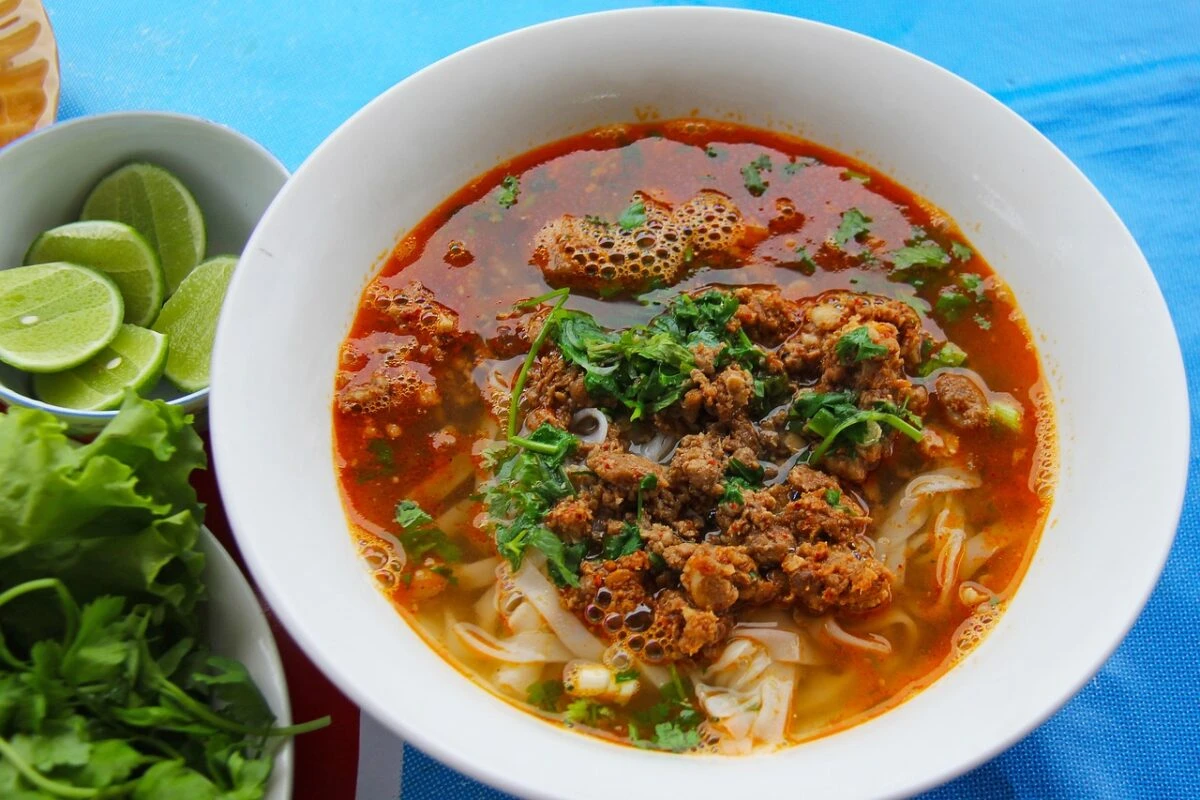
![Can you recommend a good Thai restaurant in [specific location]?](https://foodnerdy.com/blog/wp-content/uploads/2023/05/9-41-768x516.jpg)

